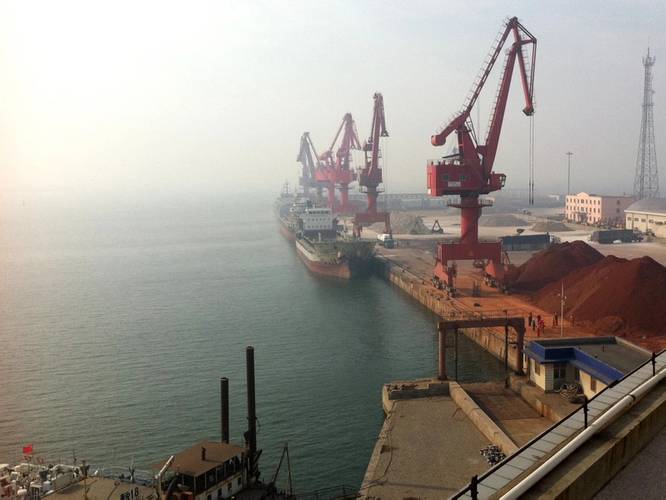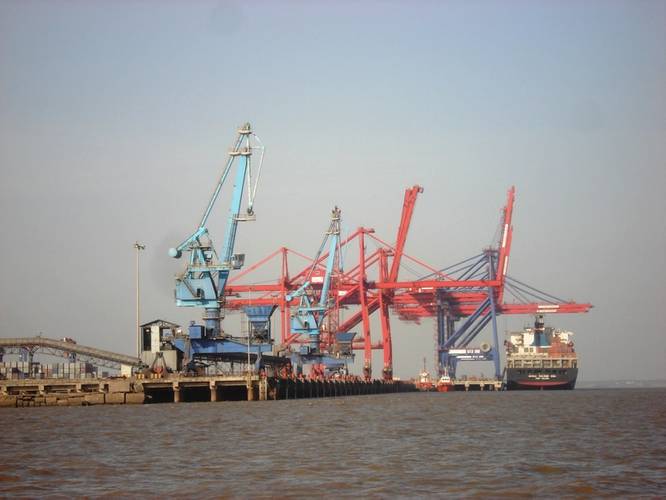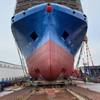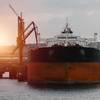It's All in the Planning
Continuing voracious demand for mined materials in China, India and other developing nations has led to an associated requirement for increased bulk terminal capacity for both export by suppliers and import by users. Whether developing an existing facility or building from scratch it is imperative that any scheme is planned in advance from engineering, commercial and operational perspectives in order to deliver maximum value to the customer. Rajan Narayan, Technical Director at BMT Consultants India, a subsidiary of BMT Group, provides an overview of current themes in the market.
Despite a dip in demand in early 2015, China remains the world’s top coal consumer, accounting for almost a quarter of the global trade and importing 291.2 million tonnes in 2014. Coal shipments to India, the world's third-largest importer, rose 19 percent to 210.6 million tonnes in 2014 driven by demand from the energy sector. Despite having access to locally mined coal or iron ore, demand for better quality materials from abroad, either to reduce emissions, improve heat rates or for use in higher specification manufacturing processes, will continue to increase the volumes of bulk materials being transported.
Considering the huge quantities involved, the consistency of demand and the pressure on price, sea-transport is the most commercially viable mode of transport. Furthermore, pressure on road and rail systems and the growing awareness of environmental factors makes sea transport ethically acceptable too. Perhaps it is not surprising that more than 90 percent of the country’s coal imports are seaborne, according to the China National Coal Association.
Developing countries in Africa and South-East Asia with access to coal, iron ore and other raw materials are responding to this demand by investing in bulk shipping terminals and the necessary infrastructure required to support them. Finance for these terminals is being provided by both governments and private organisations: Government financed terminals tend to be developed to support and promote the needs of local or regional business while privately backed facilities are predominantly used for the owners’ sole benefit.
BMT is supporting the development of these facilities by providing professional support to clients throughout the life-cycle of a project from initial concept, through master planning, assisting the client in demonstrating the robustness of their business plan as part of securing funding, obtaining the necessary permissions to proceed and adding value as part of the peer review of detailed design. Early involvement in itself can add value for the client as it negates the risk of issues coming to light later in the process leading to a redesign.
The planning process for developing an existing facility or building from scratch will involve identifying the best compromise between whole-life cost and operational efficiency and flexibility. In order to make an informed decision it is important to fully understand all the factors that will impact on the design and specification of a bulk terminal. A prime example of this involves the possible provision of a breakwater or other sea-defences to provide protection against bad-weather during ship unloading. A larger, more expensive breakwater will provide a wider working window for loading or unloading; however a smaller breakwater might be more cost-effective over the life of the project depending on the prevailing weather conditions and historical frequency of storms, the types of vessels using the facility and the cost of non-productive time of dockworkers and uploading plant waiting for bad weather to pass.
Another key issue that must be considered in a wider context is the size of vessel that will visit that facility. The unit cost of transporting coal or iron ore by Panamax can be as much as 50 percent more than by Capesize so consequently ship size must be taken into account, from both commercial and engineering perspectives. Larger vessels including Very Large Ore Carriers / Ultra Large Ore Carriers may be more cost-effective purely in terms of direct unit cost, but ancillary costs such as the potential requirement for tugs, pilotage and maintenance dredging must be taken into account.
For clients generating power, or producing products such as steel, a key requirement is ensuring a sufficient supply of raw materials to keep the plant running in any situation short of force majeure. These heavy industries require large quantities of power, fuel and raw materials and cannot easily shut-down if supply is interrupted. Consequently, suitable consideration needs to be given to proving suitably large stock-yards to hold raw materials for an agreed number of days of production without resupply. Furthermore, the material handling facilities from dockside to stockyard and then stockyard to factory or power-station must be specified to deliver both suitable capacity and reliability in line with operational requirements. It’s not uncommon to see up to 12,000 tonnes/hour of bulk material moved in the terminal environment so material handling equipment must be fit for purpose with suitable redundancy built-in.
Additional storage space and material handling equipment with high availability will have a commercial implication so part of the planning process will inevitably involve cost benefit analyses within the operational parameters to demonstrate best value to the client. Global demand for material handling equipment is projected to increase five percent annually by 2018 to $142 billion providing a buoyant market that is enable manufacturers of materials handling equipment to invest in new technology. While use of automated storage and retrieval systems and automated guided vehicles is already seeing strong growth in the US and Australia, lower levels of technology are still likely to be deployed in Africa, India and China over the next few years.
In order to develop the most effective, efficient and commercially sustainable bulk terminal, initial planning must develop design parameters based on the client’s budget, commercial and operational requirements as well as the physical and environmental constraints inherent in the site. By developing a homogeneous design philosophy, ideally with early involvement from the planning and design teams, it is possible to develop a facility that optimises utilisation as far as reasonably possible while minimising the risk of demurrage, double-handling of materials and delays.















